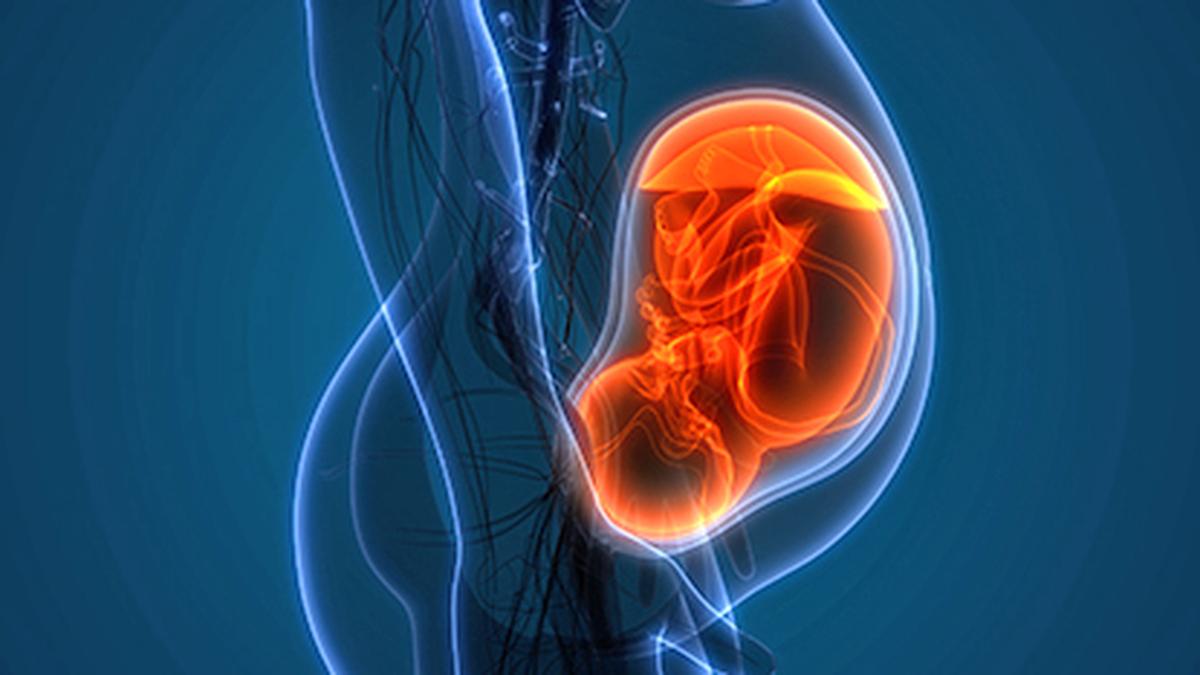
Foetus in foetu: a continuing twin mysteryPremium
The Hindu
Rare case of "fetus in fetu" discovered in India, a condition where one twin develops inside the other.
At the moment of conception, twins begin a lifelong relationship that scientists think might answer some of life’s profound questions. While twinning is generally considered to be a natural and scientific marvel, mysterious circumstances due to accidents of nature can be devastating.
In January 2025, doctors at the Buldhana District Women’s Hospital in Maharashtra detected a rare case of “foetus in foetu” in a pregnant woman. This condition occurs when a malformed foetus develops inside another foetus. The congenital anomaly was detected during a regular sonographic assessment of a 32-year-old pregnant woman.
‘Foetus in foetu’ is a foetus-like mass developed within the body of the other foetus in a monozygotic twin pregnancy. Basically, one twin is very underdeveloped and enwrapped inside the body of the other twin, so much so that the pregnancy is considered a singleton pregnancy. The presence of a twin inside the body of the other twin may go undetected for years. In this case, the condition was discovered during a routine pregnancy scan itself. The woman delivered the baby by a C-section delivery. Doctors performed a surgery on the newborn to remove the undeveloped foetus wrapped in the infant’s body. Both the mother and baby recovered well.
Also known as cryptodidymus, this rare congenital disorder affects about one in 500,000 births. Less than 200 cases have been reported worldwide, with about 10 to 15 cases in India.
The exact cause of this condition is not fully understood, but it’s believed to result from an anomaly during the development of monozygotic or identical twins. About 10 to 15 days after the conception of monozygotic twins, the cell mass of the embryo may be split unevenly, due to which one twin is smaller and incompletely formed with the other twin fully developed. The smaller twin gets trapped within the larger twin. The trapped twin is considered “parasitic,” as it draws its blood supply and nutrients from the other “host” twin. The trapped or “parasitic twin” has some morphologic features of a normal foetus such as an umbilical cord-like structure, a bag of membranes surrounding it, and blood vessel connections to the host twin. It may have a vertebral column, limbs, and a few organs but lacks vital organs like the brain, heart or gut. Despite having “living tissue,” the parasitic twin has no prospects of independent existence outside the host twin.
The presence of the parasitic twin affects the health of the host twin, who has to “feed” the former from the nutrients received over a single umbilical cord. In addition, enlargement of the trapped parasitic twin may compress vital organs in the host and cause discomfort or life-threatening complications.
Generally, the parasitic twin is found in the abdomen of the host twin. Rarely, it may be found in other organs like the brain or chest. Most of the cases reported have presented in childhood as an abdominal mass causing gut obstructions and swelling. X-rays and CT scans have confirmed the presence of foetal structures like digits, limbs, a spine, etc., in the mass. Treatment is surgical excision of the mass — the parasitic twin — with special attention being given to the foetus’ blood supply.

In a study published in the journal Mammalian Biology on December 23, 2024, researchers compared the calls of Asian elephants based on their age, sex, and behaviour. They found the duration of trumpets remained fairly consistent across all age classes for both male and female Asian elephants but roars and roar-rumbles got longer with age.












